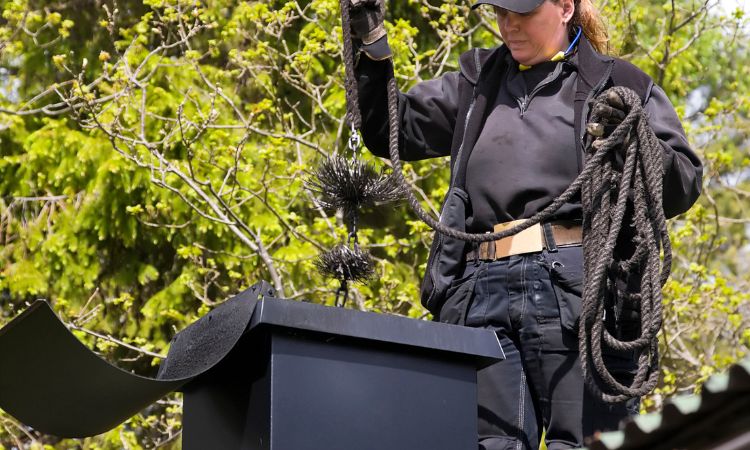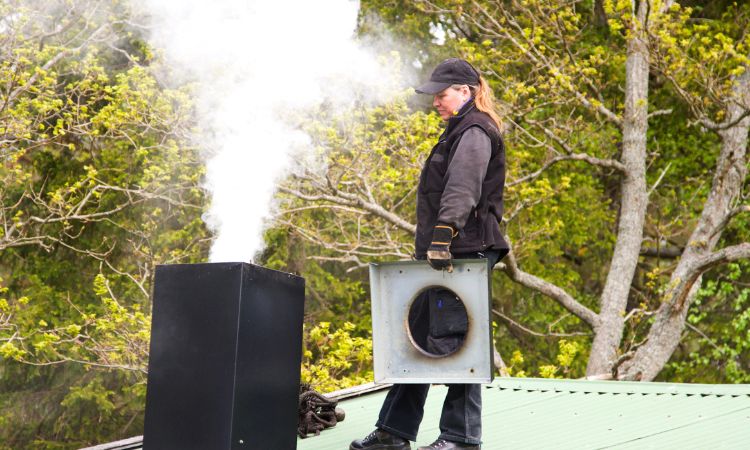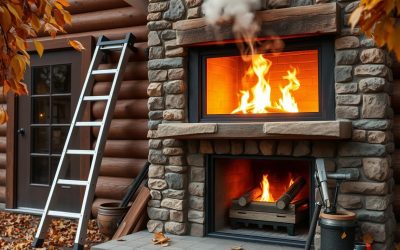Love your wood-burning fireplace, but detest having to have it cleaned by a pro? Owners of homes with wood-burning fireplaces frequently appreciate having wood fires all through the fall and winter but detest the risky creosote buildup that results from having wood fires.
Many people are skeptical about the effectiveness of chimney sweep logs or creosote sweeping logs in clearing creosote buildup from fireplace flues and ensuring the safety of fireplaces.
Does a chimney sweeping log really work? They do not work efficiently, to put it briefly. Certainly not thoroughly enough to clean the flue entirely and properly.
In this article, we shall dig into the effectiveness of Chimney Sweeping Logs, their pros, and cons along with their safety.
Do chimney sweeping logs really work? (Explained)
The short answer is yes, they do work but to a certain amount. Using Chimney Sweeping Logs repeatedly can reduce the early stages of creosote buildup by up to 60%. This is because they contain a chemical catalyst.
Keep in mind that creosote development occurs in three stages:
- Stage 1 consists of flaky soot that is easily removed by brushing.
- Stage 2 comprises the flakes with hardened tar, which is often only removable with specialist rotary equipment.
- In Stage 3, the creosote has transformed into a glaze that, in many circumstances, calls for the replacement of the chimney liner.
But can such logs take the place of a chimney cleaning done by a qualified company? NO is the unequivocal response.
Are Chimney Cleaning Logs Safe?

YES. These logs are secure if used frequently and properly. You can use these logs in any wood-burning fire despite the chemicals in them that loosen the creosote.
Additionally, the creosote that settles to the bottom of your fireplace must be cleaned out. After using one of these logs, clean up any leftover debris with a broom. You will not run the risk of creosote accumulating and starting a fire that way.
Furthermore, these logs ought to be used in conjunction with chimney sweeps who are experts. A chimney cleaning expert can guarantee that your chimney is clean and can access areas that the chimney logs might not be able to.
Finally, when it comes to cleaning your chimney, you do not always need to engage a professional. But to keep your chimney and fireplace in good shape, you need to use chimney sweep services.
Advantages of Chimney Cleaning Logs
Easy To Use
The log is easily inserted into your fireplace and lit similarly to another piece of wood. The cleaning logs will do their job in a few hours.
DIY Home Cleaning
These logs are great if you want to maintain your fireplace between expert cleanings. You can sweep out the fireplace’s bottom and clean the area around the sides. A cleaning log, however, can dislodge soot that is out of your grasp.
Economical
They retain their functionality even when stored for a while. You can save money by purchasing them in bulk and ensuring that you always have one on hand.
Disadvantages of Chimney Cleaning Logs
Not A Substitute For Hiring A Professional Cleaning
You still need to hire a chimney sweep even if you use one after each time you use your fireplace. All creosote stages, including the difficult-to-remove stages two and three, can be removed by experts.
Poor Cleaning Performance
These logs work great in fireplaces that burn wood, but not gas or propane fireplaces. If your house has a fireplace like that, you should employ additional cleaning techniques.
Tips to Get the Most from Your Logs

- Make sure a chimney cleaning log will function with your fireplace before you purchase it. For instance, they don’t function with pellet stoves.
- The first fire of the season shouldn’t be made with the log. Burn fires with ordinary fuel for two or three days first to make sure the fireplace and chimney are in good working order.
- It is sufficient to burn one chimney cleaning log at the start or middle of the season if you only have one or two fires every week. You will require two logs if you burn a fire every day: one at the start of the season and one in the middle.
- Use the bypass mechanism to shut off a wood burner with a catalytic combustion engine. Allow the chemicals in the chimney cleaning log to do their thing for the next week or two.
- Check your chimney for leaves, animal nests, other debris, and obstacles before using the creosote sweeping log, and make sure the fireplace damper is open.
- Before you take the wrapping off the log, read the directions. Although you’ll need to slightly loosen the packing to allow ventilation for burning, some logs are made to be burned in their packaging.
People also ask
How frequently should a chimney sweep log be used?
You should use one log for every 60 fires for the greatest results. Keep account of each fire if you are unsure how frequently you utilize your chimney. It could take longer or less time to put out 60 flames.
Are creosote sweeping logs toxic?
Yes, hazardous compounds are present in CSLs. Thus it is compulsory to adhere to the manufacturer’s recommendations. Your damper must stay open until the vapors are released due to their toxicity.
What is the operation of a creosote cleaning log?
Creosote in the chimney is made loose as the logs burn, and as a result, it falls into the firebox and can be readily cleaned out there.
Final words
Although chimney sweeping logs can be used to clean your flue, you should employ a professional chimney sweep once a year. The chimney sweep can thoroughly examine the chimney and remove any creosote or soot from the bottom and the duct.
A specialist can also clean the damper, flue, and other components of the chimney. A chimney sweep can make sure your chimney is clear of that build-up while chimney cleaning logs can assist release the grime.
Click here for other related articles





0 Comments